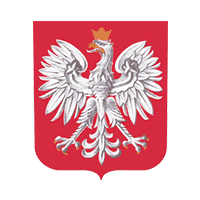Eugeniusz KRAUSE, Piotr LITWA
Among the factors shaping the total volume of methane released into the longwall environment in hard coal mines, the length of the longwall is of the greatest importance; therefore, it is crucial for methane prevention. The length of the longwall has the greatest influence on the range of the degassing zone of undermined and overmined seams, from which approx. 60-80% methane is released. Even though merely 20-40% of the methane comes from the mined seams, it has the greatest share in shaping the methane hazard directly in the longwall. An exemplary comparison of 200 and 300 m longwalls in the case of undermined and overmined seams shows a significant, non-linear increase in the volume of deposit degassing. Assuming the same extraction, the volume of coal in seams relieved by a 300 m longwall turns out to be 77.4% higher than in seams relieved by a 200 m longwall. The design of the work organisation in the longwall should be based on the projected release of methane during the mining cycle. On the example of two longwalls, it was shown that the volume of methane released directly to the longwall is directly proportional to the volume of methane released during the roadheader's cutting cycle and inversely proportional to the duration of the cycle. Calculations made using the so-called dynamic method of forecasting the absolute methane content of longwalls [3] enable the forecasting of the amount of methane released into the longwall excavation and the estimation of the extraction capacity of the longwall, taking into account the parameters and the designed method of ventilated longwall as well as the speed of mining with roadheaders.
Artur DYLONG, Irena J. KUCIARA, Stanisław TRENCZEK
The article present current mining regulations in Poland regarding natural hazards. They contain rules and the most important criteria for the classification of rock outburst, methane and endogenous fire hazards. For monitoring particular hazards there are in use the following monitoring systems: seismic and seismic-acoustic systems – for rock outburst hazard, automatic methane content in the ventilation air systems – for methane one, as well as automatic carbon monoxide monitoring systems – for fire hazard. It should be emphasized that each monitoring system must meet the requirements of Polish standards (adapted to European standards) as well as be supervised by dispatchers. The dispatchers, because of high responsibility of them, require very high competences and qualifications.
Robert PODOLSKI, Miranda PTAK
In 1989, by way of several decisions, the first post-communist government introduced an economic reform based on strong monetarism and limited market freedom, which referred, in particular, to coal mines. The mining industry assumed the role of the so-called "inflation anchor", thanks to the prices of coal being lower than the cost of obtaining it. In the case of the coal mining industry in Lower Silesia, its liquidation was determined by the appeal of the Mining Commission of the Wałbrzych NSZZ "Solidarność" (dated 20 February 1990) to close the mines due to threat to the employees. The Wałbrzych Mines and the "Nowa Ruda" mine were put into liquidation on 1 January 1991 and in January 1992, respectively. However, the decision to liquidate the mines of the Lower Silesian Coal Basin was not accompanied by an in-depth analysis of its effects, despite the fact that it concerned an area where the mining industry and companies working in it employed, e.g. in the Nowa Ruda region, 70-80% of the male workforce! The process of mine liquidation was accompanied by the liquidation of plants of various industries. As a result, at the end of 1992, approx. 50 thousand unemployed persons were registered in the Wałbrzych Voivodeship. Managers of the Lower Silesian mines tried to limit the negative effects of liquidation on the local labour market by creating new business entities with the mines' assets and employees. This process was intended, among other things, to stimulate the economic development of the region and minimise collective redundancies of mine teams. In the years 1991-1994, 27 new business entities were established on the basis of the assets of Wałbrzyskie KWK (Wałbrzych Hard Coal Mines), which, in May 1995, employed approx. 2,000 people. The assets of KWK "Nowa Ruda" ("Nowa Ruda" Hard Coal Mine) enabled the launch of e.g. an open pit mining plant for rock deposits and comprehensive production of wood, as well as of undertakings from the agricultural and food as well as tourist industries. Dramatic unemployment (over 30%) and huge emigration of the young generation contributed to the creation of the Wałbrzych Special Economic Zone by the government in 1997. Its success was determined by very favourable tax conditions and a valuable workforce for investors. However, Wałbrzych - the "capital" of the zone - is not able to take advantage of these opportunities, as the deindustrialisation process has led to a decrease in the number of inhabitants by approx. 30 thousand and to the development of an unfavourable age structure. The most dynamic part of the society left, leading to a lack of manpower and even very beneficial undertakings having no chance of being implemented

